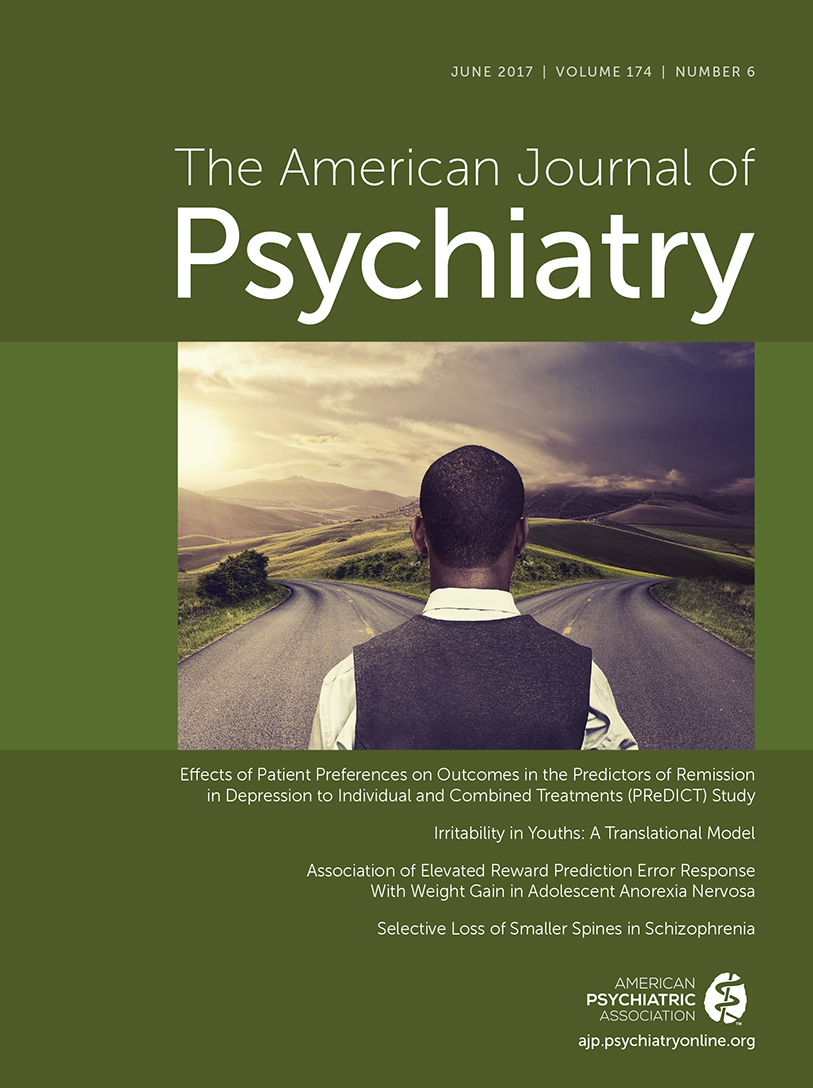Association and Causation in Brain Imaging: The Case of OCD
To the Editor: In light of the incredible technological advances in brain imaging over the last 25 years, we read with interest the recent international collaborative meta-analysis of brain imaging research on obsessive-compulsive disorder (OCD) by Boedhoe et al. (1). The strikingly small effect sizes (2) for the brain areas found in this body of literature raise a broad theoretical question, namely: What is the minimum effect size at which we can declare imaging results to be substantively and specifically related to putative psychopathological states? Boedhoe et al. focus on increased thalamic volume in an unmedicated pediatric OCD sample, with a small effect size of 0.38, exemplifying a 3.1% difference in volume. This is a correlative finding and is not demonstrably causative. Furthermore, this finding is not specific to OCD. Although the authors assert that their finding of increased thalamic volume may be “an early marker of [OCD],” they also point to the same findings in Tourette’s syndrome and attention deficit hyperactivity disorder. When the small effect size and lack of specificity are considered along with the cross-sectional nature of imaging studies, one recognizes the problems with drawing meaningful conclusions from this literature, such as the authors’ conclusion that their cross-sectional findings are “in line with the developmental nature of OCD and neuroplastic changes during the course of the illness.”
There is currently no agreed-upon standard for declaring brain regions or hypothesized circuits as being related to specific psychiatric conditions. Moreover, there are no standards yet set forth that would lead to the declaration that a brain area or circuit is causal to any psychiatric disorder. It is with great anticipation that such standards be developed. Any standards that are developed would, by necessity, have to reckon with the minimum threshold for implying a role for a brain area involved in psychiatric disorders relative to healthy controls, as well as a critical value or heuristic for making claims about this role. Ideally, standards would also lay out how investigators may move from correlations to causal mechanisms, such as claims of underlying pathophysiology. It would seem that the need for such standards is now at an urgent level, particularly given the recent initiatives for developing sophisticated models of psychopathology (i.e., the Research Domain Criteria [3]) that strongly emphasize biological mechanisms of psychiatric disorders. Instead, the closest standards presently available are cutoff points for odds ratios for genes in association with psychopathology (4). Based on the findings from Boedhoe et al. (1), it appears that a disorder-specific structural pathophysiology of OCD is far from identified, and the few brain areas identified as different from control subjects have very weak and nonspecific association with the condition. At present, there is a poverty of research that evaluates brain structural and functional indices between OCD and clinically relevant controls, and there is no experimental or longitudinal research that identifies causal biological mechanisms of the disorder. Until such evidence is presented, conclusions regarding disorder-specific pathophysiology of brain areas in association with OCD—especially causal conclusions—are unfounded.
1 : Distinct subcortical volume alterations in pediatric and adult OCD: a worldwide meta- and mega-analysis. Am J Psychiatry 2017; 174:60–69Link, Google Scholar
2 : Statistical Power Analysis for the Behavioral Sciences, 2nd ed. Mahway, NJ, Lawrence Erlbaum Associates, 1988Google Scholar
3 : Research Domain Criteria (RDoC): toward a new classification framework for research on mental disorders. Am J Psychiatry 2010; 167:748–751Link, Google Scholar
4 : “A gene for...”: the nature of gene action in psychiatric disorders. Am J Psychiatry 2005; 162:1243–1252Link, Google Scholar



